This website uses cookies in order to enhance the overall user experience.
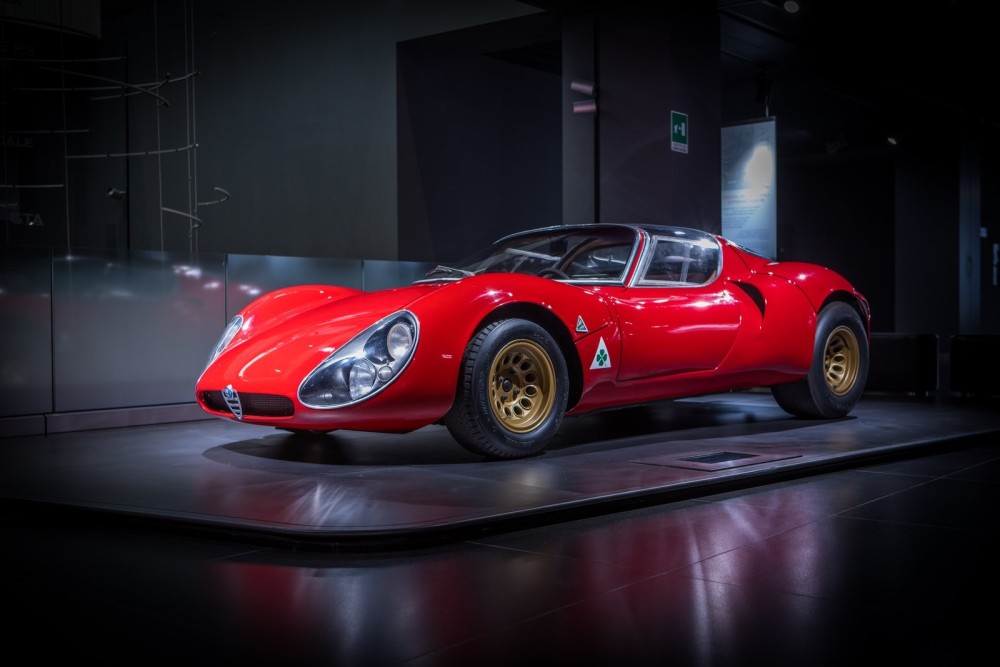
It is not just this car’s top speed and price that was among the upper echelons of its times, for even these days it remains among the most gorgeous and stylish cars ever produced. Moreover, the Alfa Romeo 33 Stradale is a super rare model too, with only 18 examples ever produced from November 1967 – March 1969.
The 33 Stradale was modeled after the Tipo 33, Alfa Romeos’ sports prototype racer, which means that mechanically it was basically a racecar, but practically it offered the comforts and practicalities of a car designed for the streets. In honoring this beautiful tradition from Italy, Alfa Romeo brought the innovative motorsport technologies of the late 1960s to the regular roads in epic fashion.
33 Stradale exterior design
It was the famous Italian designer Franco Scaglione who drew the Stradale’s beautiful designed hand-made aluminum body. In this, the stylish oval front shapes was an Italian design trend for high-performance cars at the time, as can be seen in the Ferrari 330 P4 racecar for example. While the ride height is kept low like its race car model, the headlights are located in oval cases reaching all the way up to the front fenders.
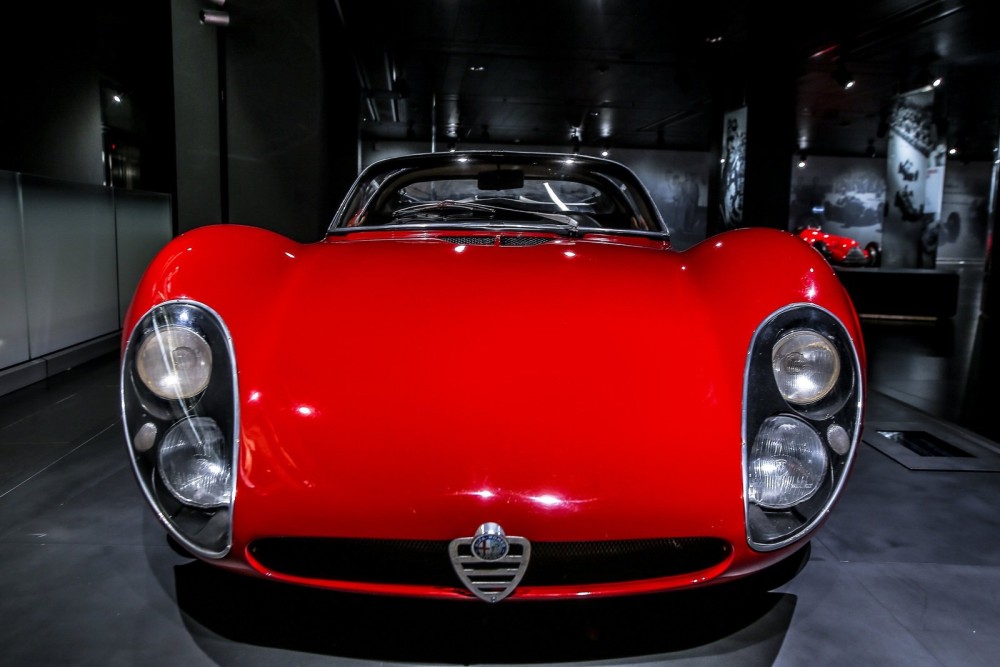
The sides of the 33 Stradale are characterized by the “dihedral” door design – the 2 butterfly doors that open up past the ceiling – which were the first ever to feature in a production car. Note by the way how the car doors don’t have any mirrors or door handles, purely for esthetic reasons of course. The door windows, in turn, bend along the windshield and continue to cover the roof as far as each seat goes to the middle. The rear window, then, gradually slopes downward in one seamless form that continues along the tailgate.
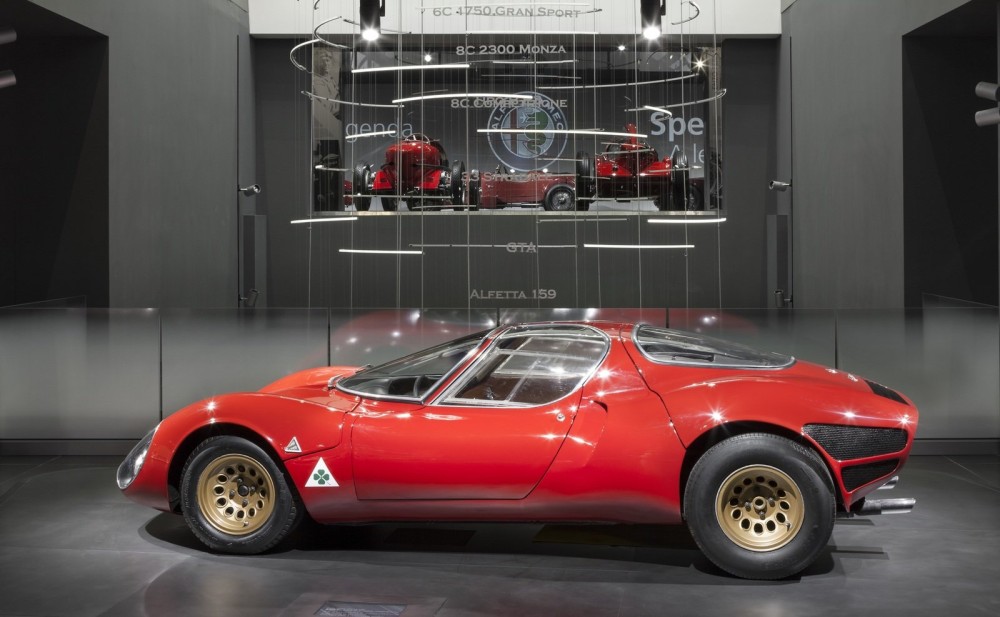
From the back, the Stradale’ huge-looking 13-inch Campagnolo magnesium wheels are accentuated, with further characterization through simple taillights, ventilation shafts for the engine, and 4 exhausts that show themselves underneath the bumper. While earlier models only had ventilation intakes before the rear wheels, later examples featured them behind the front wheels too in order to cool the brakes down more effectively. Also the headlights went from double to single in later designs, because later safety regulations mandated headlights to be located at a minimum height from the ground up.
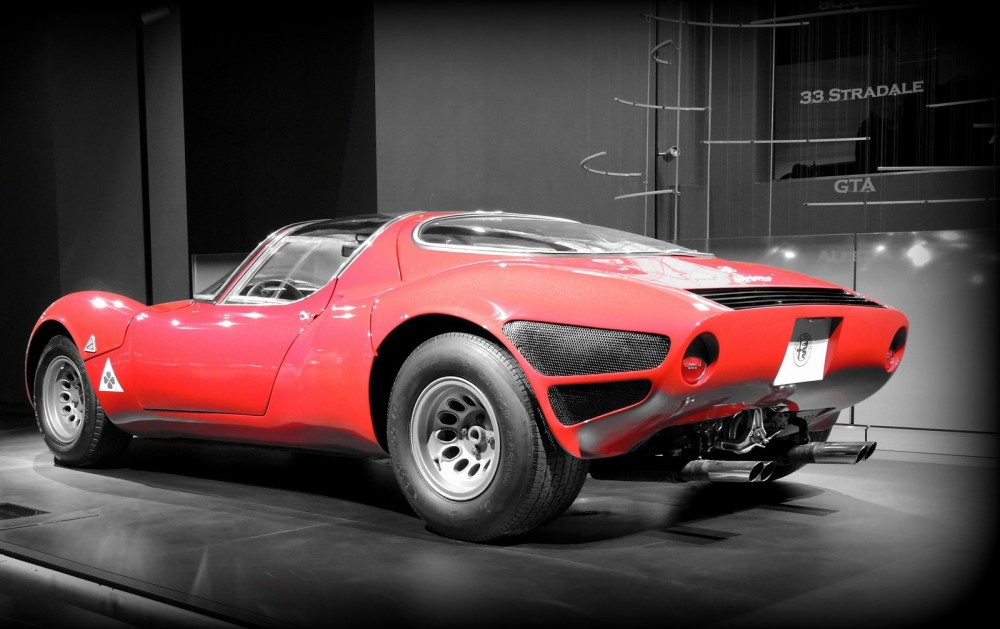
Inside the 33 Stradale
Luckily, the Stradale’s interior has little to do with the motorsport race cabin of the car that it was modeled after. Since Alfa Romeo set out to create a premium street car, it equipped the 33 Stradale with everything that makes it so.
Thus, inside you’ll find plenty of leather veneers on the doors, the seats and the bulkhead behind it, the dashboard, and even the central tunnel. Meanwhile the door handles and all the switchgears inside the cabin are made from polished metal. The 2 seats are tucked in nicely in order to accommodate the aerodynamic car form, while also offering plenty of lateral support for its time.
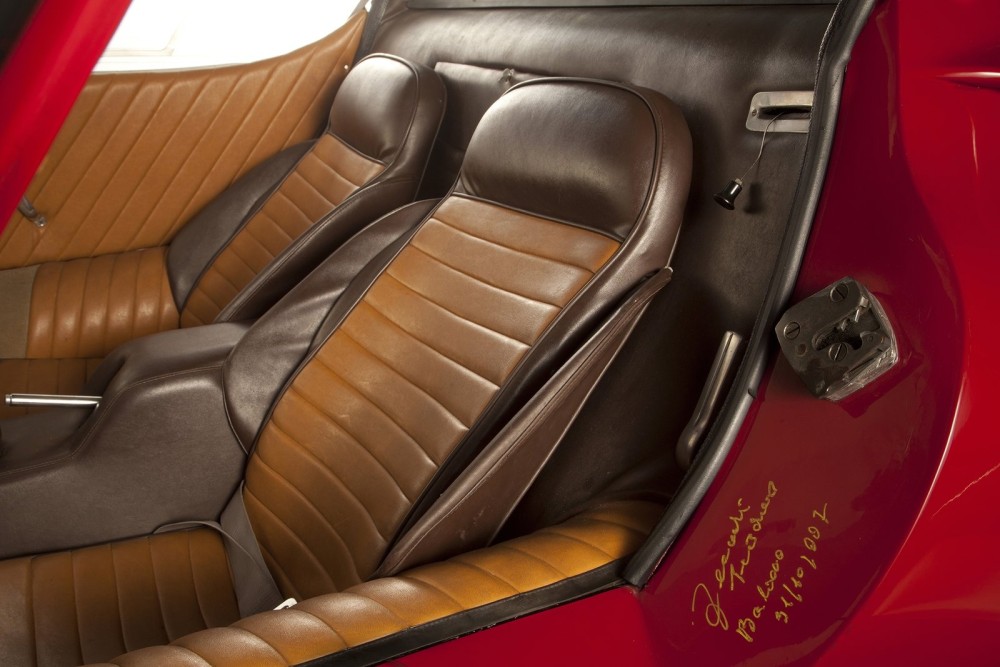
The 33 Stradale’s powertrain
The beautiful mid/rear engine – designed by Carlo Chiti – in this powerhouse vehicle has much to thank to its racetrack predecessor. The 33 Stradale is detuned just a tad so that it’s suitable for the streets, with top-notch spark and fueling, velocity stacks, and a refined suspension system all honoring its competitive nature.
Upon elevating the rear clamshell bodywork, you’ll find a completely aluminum built 1995cc V8 engine with a double overhead camshaft and 90-degree angled cylinder banks. The inside of the engine is craftily designed so that it generates serious power without the disproportionate piston speed that would overtax it. In addition, there are 4 ignition coils with twin spark plugs per cylinder while each cylinder contains 2 valves. Finally, there is SPICA fuel injection and the lubrication is dry sump, with a 6-speed gearbox that is largely the same as in Alfa Romeo’s Tipo 33 race model.

Altogether, this powerful setup generates 227hp at 8.800rpm and a 152lb-ft of torque at 7.000rpm, powering the car to 100km/h in under 6 seconds and all the way to 258km/h if the pedal is kept to the floor. Interestingly, the fact that all 33 Stradale’s are hand-built means that the horsepower and top speed vary from example to example. For instance, numbers of 243 – 254hp are registered coming from the Stradale’s engine, while owners have claimed top speeds up to 290km/h.
This impressive performance isn’t too surprising when you realize that the 33 Stradale only weighs 700kg, partly made possible through the aluminum parts in the tubular chassis design alloy. With the racing suspension left intact, Girling disc brakes and inboard brakes in the back, and a rack and pinion steering setup, driving the Stradale feels like controlling chaos on the road.
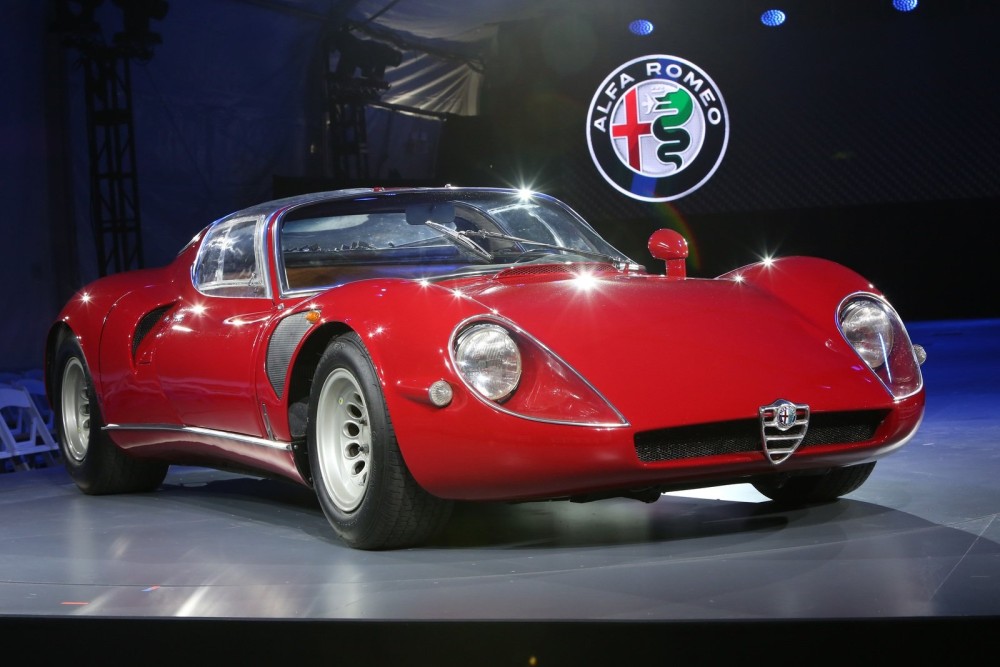
Being such a beautiful performance machine, it’s not surprising that the 33 Stradale made its way to the big screen as well. The original double headlight 33 Stradale prototype featured in the film Un Bellismo Novembre (“A Splendid November”), while its racing precursor, the Tipo 33, got a role in the 1971 Le Mans film which featured Steve McQueen.
The hand-built nature of the 33 Stradale only adds to the character of this legend, for besides panel alignment and small details like this, the varying models have various positions to mount the windscreen at, with even the amount of windscreen wipers varying from example to example. These days, this eternally gorgeous design and a performance car that matches sports cars with double the engine size would set you back over 10 million dollars, if it would ever be for sale again…

